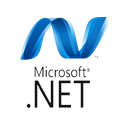
ASP.NET is a server side web application framework designed for web development with minimum coding to produce dynamic web pages. It allows programmers to write the code using any .NET supporting languages as it is built on Common Language Runtime (CLR). A design surface and many components and controls allow you to build powerful UI-driven sites with data access in a sophisticated way.
ASP.NET is very essential for those who want to be into .NET development. In ASP.NET Training course, at Deccansoft, all the features of the framework are explained so very well that eventually you would be able to build a dynamic website independently. At our ASP.NET training in Hyderabad all the drag and drop and event driven features used are clearly explained along with how to implement C# and VB.NET languages in this technology. HTML, CSS, Java Script concepts used in ASP.Net are also taught in detail.
Deccansoft ASP.NET training institute is the final destination to anybody who wants to excel in ASP.Net technology. Our teaching methodology in ASP.NET Training involves excellent courseware for every topic and provides a detailed explanation of all the concepts. Practical demonstration on how these concepts can be incorporated in real time projects is given. Students are regularly evaluated to assess their skills in all important topics so that they are prepared to face the challenges during interviews.